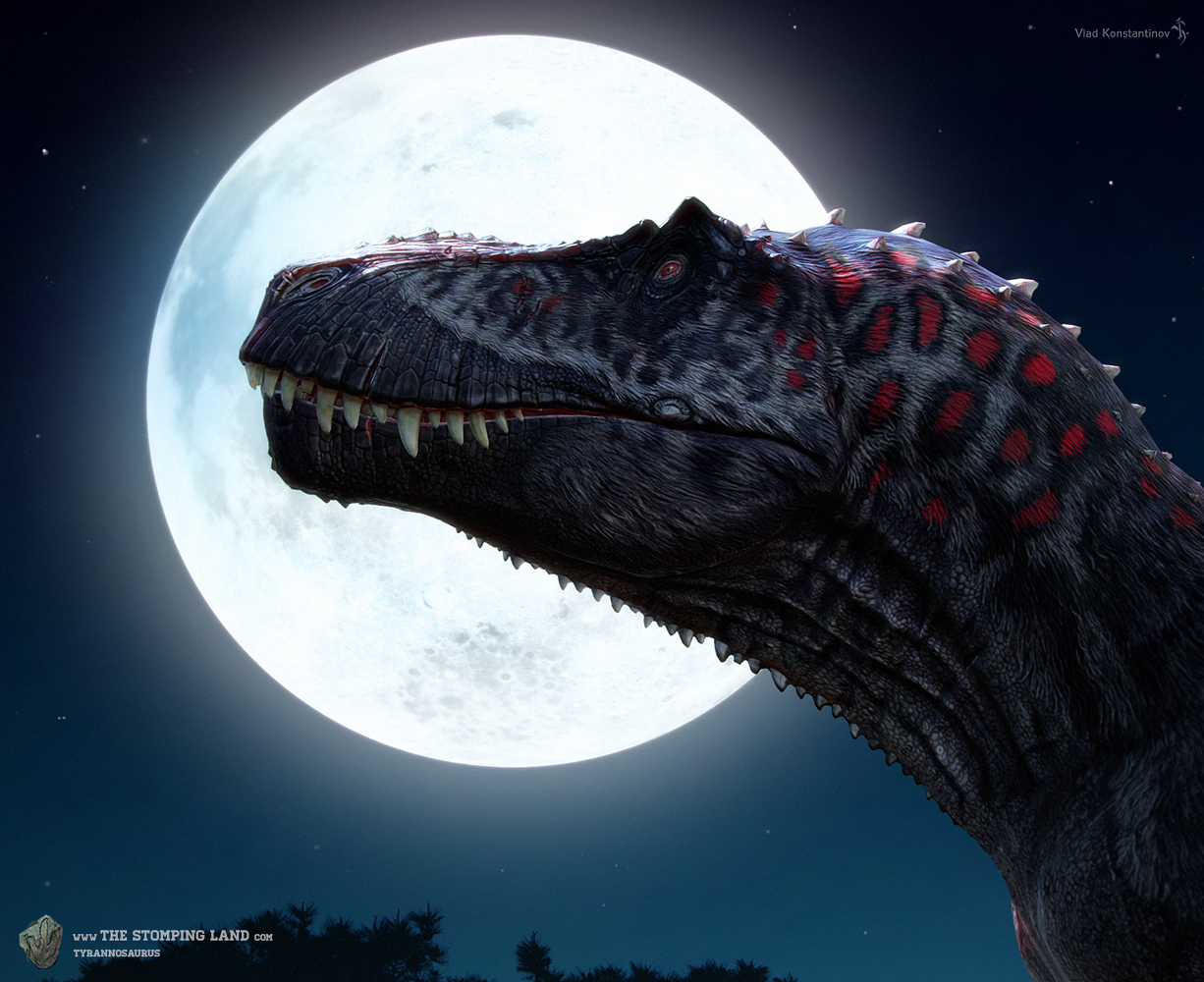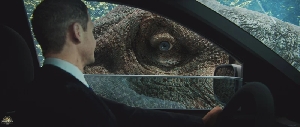T. rex speed
Dinosaurs Forum Topic

Allotitan
MemberCompsognathusJun 15, 20143037 Views10 RepliesSomething I read while looking at past dino exhibits at amnh American museum of natural history
Article if link doesn't work
Current research suggests that T. rex would have moved at the rough equivalent of 11 to 16 kilometers (seven to ten miles) per hour. This is much slower than many previous estimates, and it's certainly less speedy than most Hollywood versions of the great Cretaceous carnivore. However, this pace is based on the weight of the animal--6,000-plus kilograms (more than 13,000 pounds)--and the stresses on bone, muscle, and tendon that take place during movement. While no one knows exactly how huge tyrannosaurs held their legs, biomechanics experts think an animal the size of T. rex's might have gotten around on legs held in a relatively straight position. That way, the animal's greatest weight--its center of mass--would have been just above its knees. Big modern animals use this pose: elephants and rhinos walk with straighter legs than small, fast animals do. Model Behavior With fast computers and new simulation software, biomechanical scientists can re-create the muscles of T. rex and assess T. rex's theoretical top speed--though not whether the animal actually achieved it. By studying living animals, including chickens and humans, researchers figured out how much leg muscle it takes for an animal to run fast. Then they applied their findings to extinct dinosaurs, varying factors such as posture and weight, which affect movement. Their results? A sprinting T. rex was a physical impossibility. While a small theropod could run fairly quickly, a six-ton tyrannosaur would have required about three tons of leg muscle to reach speeds of 70 kilometers (45 miles) per hour! "Try This" Stand with bent legs while you count slowly to 10. Feel how tired your legs get? It takes 50 percent more energy to stand or move with bent legs than with legs held comfortably straight. Some researchers think T. rex, which was 170 times heavier than the average 10-year-old, moved about on straight legs, as elephants do, to conserve energy. Designing a Dinosaur T. rex is often shown with its great legs in a crouch--but was that a typical pose? Some biomechanical scientists doubt it. Their research shows that when large living mammals--elephants, hippos, rhinos, humans--lock their legs into an upright position, standing takes less energy. So T. rex may have been rather straight-legged, too. In contrast, small, light animals--who must evade predators--often trade energy efficiency for speed; many assume a bent-legged posture. In other words, a design that works at one size for one lifestyle may not work at another. The colored lines on this computer-generated right leg of a T. rex represent the muscles controlling locomotion. Computer modeling is a huge advance, letting researchers treat bones, tendons, and muscles as a single integrated system. T. rex vs. "Chicken Little" An old-fashioned barnyard chicken is fairly fast. Like any animal, it owes its speed partly to muscle anatomy. The muscles in each leg represent up to 10 percent of a chicken's body weight. In fact, chickens are overbuilt for speed: An animal of a chicken's weight and shape could run fast with only half that amount of leg muscle.The scientists who created the computer model of T. rex decided to enlarge a speedy chicken to T. rex's size while keeping its design the same, a process called scaling up. The result? A 6,000-kilogram (13,000-pound) chicken would need fantastically muscular legs just to walk. Instead of 10 percent, a running mega-fowl would need 62 percent of its body weight as muscle in each huge limb--a mathematical and biological impossibility. Scaling Up In nature, large organisms are rarely just scaled-up versions of small ones. For example, children have large heads relative to their bodies; as they grow, this proportion changes. Most increases in size are accompanied by similar adjustments of body structure. In other words, simple scaling up of a smaller bipedal dinosaur would not have resulted in a T. rex. Movie Magic In a tense moment in the film Jurassic Park, scientists in a speeding car flee a pursuing tyrannosaur--and the animal behind them seems to be closing in. But when filmmakers combined the animated creature with real footage, they had a problem. A T. rex moving as fast as the vehicle looked unrealistic; its legs were spinning, said one animator, "like Roadrunner's when he's going off a cliff. "The solution? Filmmakers slowed T. rex to about 25 kilometers (16 miles) per hour. The chase still looks fast because they slid extra scenery behind the animal. The new speed is within the range predicted by biomechanical modeling. What Is Running? All motion, whether dinosaur or human, is a struggle with gravity, but walking is an easier struggle than running. An animal walking on two legs--a human, for example--always has one foot on the ground; a running animal leaves the ground entirely for some of its stride. Running requires about two-and-a-half times the muscle force of walking, so it's possible T. rex didn't run at all.
When life gives you lemons, don't make lemonade. Tell life I don't want you're damn lemons, and then squeeze them into life's eyes!
Replies to T. rex speed
Hey Guest, want to add your say?
Are you an avid Jurassic World fan looking for a dedicated online community of likeminded fans? Look no further! Create your own profile today and take part in our forums and gain XP points for all the content you post!

















